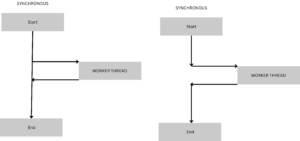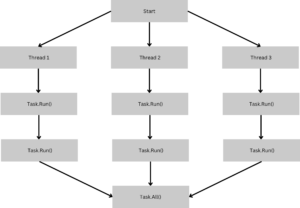As a backend developer, I need a high-performance backend of my application while keeping all the functionality. The backend could be easy to write but much more difficult to handle. In the backend a single line of code is accessed with every request, it is deployed on the main server which needs to handle every request coming towards it without impacting the system performance and reliability.
This article will discuss how to optimize backend code and ways to improve your code for high-performance backend.
Optimize database access
Reduce the database round trip: Getting data could be an impactful operation for application performance. In this operation, we access our database through an SQL connection and can retrieve the data we want but if we retrieve the data again, it could be a backslash for our high-performance backend.
For example: If you have a grocery store where products are delivered from the warehouse, will it be good to go again and again to bring products one by one? you need to spend time traveling to the warehouse and then retrieving the product and then coming back.
Asynchronous Programming
Async and await can help in improving the execution of the task, as it can help in improving the blocking i/o operations like getting data from databases/files. This will allow our application to scale by allowing the server to handle concurrent requests.

Optimize Data Structures and Algorithms
Choosing the right data structure is essential as using the required data structure can make backend performance optimization. It is also recommended to dictionary for lookup and a list for simple collection, LINQ operations are costly in performance so it is also recommended to write simple queries and avoid unnecessary projections/operations
Reducing Memory Usage and Garbage Collection
Structs uses stack (inline memory) as it uses value type rather than reference type which avoids heap memory but it is good for lightweight and small simple types. A copy of the data is created, unlike the classes which use the reference type.
Large Object Heap (LOH) Allocations can highly impact the performance of your application as it increases the load on the garbage collection.
Span<T> & Memory<T> is a very effective way to slice arrays or strings without doing any extra allocation. It also uses the memory very efficiently leaving space for our variables.
Optimize API Backend Performance Optimization
Reducing the size of JSON or XML payload by selecting only the required fields which are required. You can also try to use DTOs (Data Transfer Objects) can help in reducing the package size.
Improve Startup Time
Reducing the number of dependency injections can also increase the application performance as on boot up all classes are initialized. Minimize the number of service configurations but only using the required service can improve the startup of your application.
Task Optimization
Using async for CPU-bound operations can reduce the high-performance backend of your application as a better way to optimize the CPU-bounded operation is using Task.Run(). Async is good when we want to prevent blocking threads but not a good choice for performing a large number operation such as loops, you can use Parallel.ForEach or PLINQ (Parallel LINQ) to process the data concurrently.

In conclusion, There is a variety of ways through which you can optimize the high-performance backend of your application and enhance its performance, it’s on your knowledge and your development skills to choose the best method/way to your result.
.NET is a vast library that could provide you the best solution for your development, To explore more about .NET please visit this page .NET. To know more about our article for backend optimization .NET.

